#Bodie Snodgrass
Text
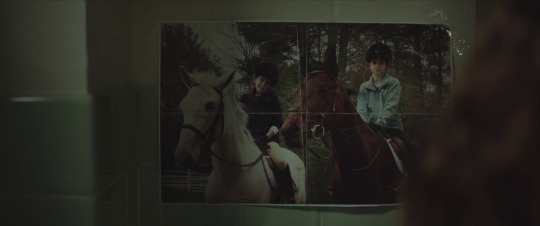



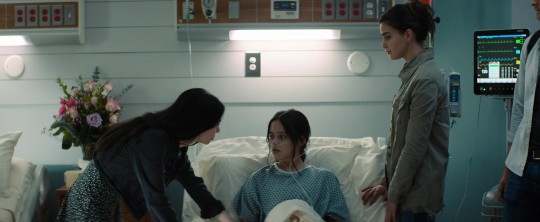



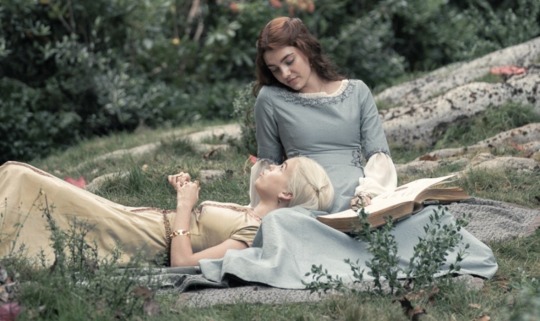

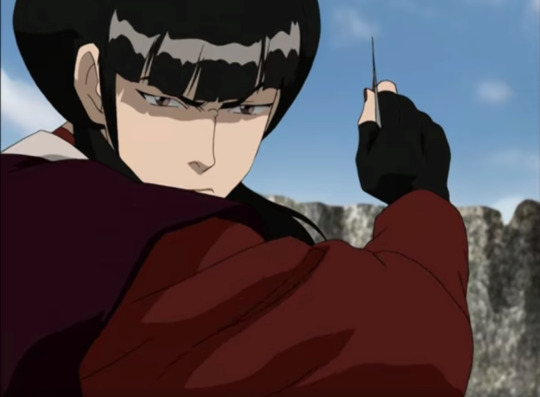
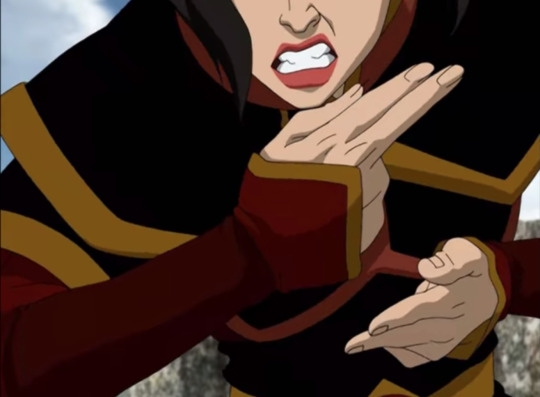

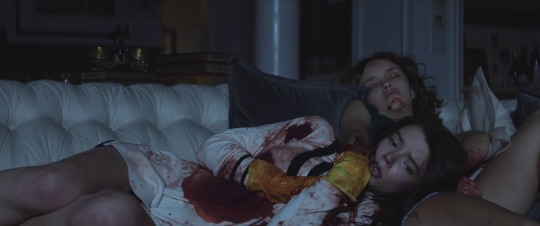

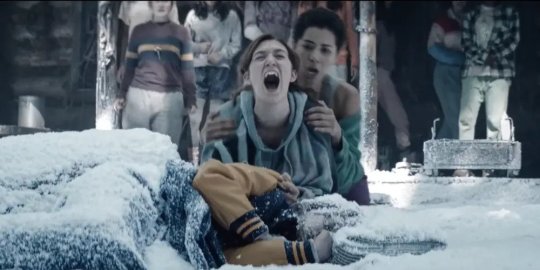
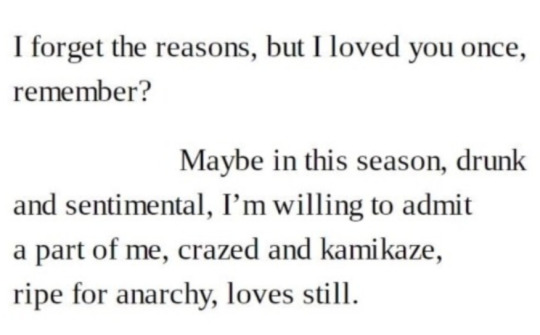
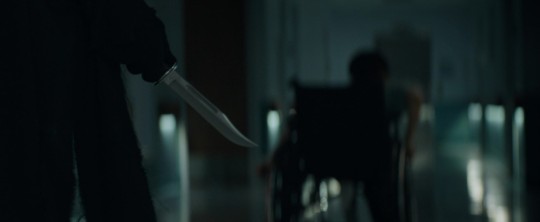




i. Thoroughbreds dir. Cory Finley
ii. Becket written by Jean Anouilh
iii. Yellowjackets
iv. Old Friend by Mitski
v. Scream dir. Matt Bettinelli-Olpin and Tyler Gillett
vi. Us Against U written by Fredrik Backman
vii. Jennifer's Body dir. Karyn Kusama
viii. A letter to W. D. Snodgrass from Anne Sexton
ix. House of the Dragon
x. I know it won't work by Gracie Abrams
xi. Avatar: The Last Airbender
xii. One Last Poem for Richard written by Sandra Cisneros
xiii. Sober II (Melodrama) by Lorde
xiv. tolerate it by Taylor Swift
xv. Thoroughbreds written by Cory Finley
#web weaving#thoroughbreds#yellowjackets#scream#hotd#house of the dragon#atla#avatar the last airbender#shaunajackie#tamber#rhaenicent#maizula#jennifer's body#this time i remembered my lesbian horror roots#webweaving#save
504 notes
·
View notes
Text
Idly thinking about the brilliance of TNG's Lower Decks, so please do bear with me for a little while here... The show's seventh season often gets a not entirely unjustified rap as being a piece of filler while various parts of the writer's room were off shepherding the launch of Voyager and the transition to film with Generations, but here at last the season manages to attain the lofty heights of exactly what we expect from the "final season" of a show like this, in a fashion far more satisfying than simple continuity references or closure to running plot threads could ever be.
What I mean is that it demonstrates the inherent perks of the writer's room as a model of television production, something that has kind of been lost in the age of streaming and micro-writer's rooms. There isn't enough space for someone like, say, Brannon Braga with his weird exploration of body horror and/or temporal fuckery, or Ronald D. Moore with his cynical realpolitik.
Lower Decks very much hinges on René Echevarria's proven talents as one of the strongest writers in the TNG stable when it comes to intimate, character-driven pieces. The pitch came from outside the writer's room, but that hints at the real function of the room as a machine, whereby an abstract idea is subjected to a very particular finesse that helps bring out particular facets of a given script.
Ironically, Echevarria's own Star Trek career is another instructive proof-of-concept in this regard. His first script was The Offspring, but it was given an extensive do-over by Michael Piller and Melinda Snodgrass to better fit the aesthetics of the show. And here, his talents have developed far enough that he's effectively put on the other end of the process.
And it works. The script is beautifully constructed, with so many clever bits that invite the audience to become an active participant in the very procedure of watching Star Trek. The Alaska/Canada screw-up from Lavelle and Ben, the decision to cut away from the transport of Joret Dal and only show the hint of a Cardassian uniform, and of course the central set piece of the intercut poker games. (Here, for the visual triumphs, we should also commend director Gabrielle Beaumount.)
The episode derives its power from the audience's understanding that there were 165 episodes before this one, with their own rhythms and cadences. It disrupts it, but ultimately, in Worf's mutual connection with the lower decks personnel at the very end, collapses the narrative back into its familiar form. Of course, like all good narrative collapses, it comes at a cost, namely that of Ensign Sito.
It's brutal, and soul-crushing, to have spent so much time with this character only to have her swept away by the vicissitudes of fate, but it never feels cynical.
(In fact, one of the more bitterly memorable moments in watching the episode with my parents tonight - who had not seen the episode, or at least not recently - was my mother worriedly voicing her suspicions that Sito was not slated for a happy ending, and my father noting how bleak it would be for them to bring back this character to tell such a story. Crucially, he did not say this to disapprove, and I think it speaks volumes to how much Echevarria's script relies on the audience applying the televisual grammar of Star Trek to the episode.)
I'll admit I haven't seen any of the more modern Trek shows beyond Season 2 of Discovery - not out of conscious choice, mind you, I just have only so many hours of the day to watch Star Trek - but I can absolutely understand why this was the episode that got to pretty much single-handedly inspire the concept of an entire show, even if only in spirit.
For a show that can often feel rather formulaic - which isn't a problem, because the formula is a very, very good one that leads to some fantastic episodes - Lower Decks is proof that TNG wasn't *entirely* content to just coast by and rest on its laurels. It would have been justified to do so, but it still threw in the odd stylistic leap here and there.
And in so doing, it inadvertently prefigures more experimental modern television techniques - and contrasting against some of the more frustrating tendencies of the streaming era - all amidst a genuinely heartfelt and moving story. With all due respect to The Pegasus, Parallels and All Good Things, for me I think Lower Decks has now emerged as the champion of Season 7.
It's just that fantastic.
26 notes
·
View notes
Text

The Legend of Old Green Eyes.
Chickamauga Battlefield, often referred to as the "Gettysburg of Georgia," is a site deeply etched in the annals of American history. This historic location, where nearly 40,000 soldiers lost their lives during a bloody Civil War battle, is now the setting for one of the most haunting legends in the South.Among the swirling mists and shadows that blanket the battlefield, a mysterious and terrifying figure is said to roam: "Old Green Eyes."
The true nature of Old Green Eyes remains shrouded in mystery. Some believe it to be the restless spirit of a Confederate soldier who lost his head during the battle, wandering the grounds in search of his missing body. Others claim the creature is something far older and more sinister, perhaps rooted in Native American folklore as a half-man, half-beast protector of sacred ground. Psychic Mark Fults even suggests that Green Eyes predates the Civil War, connected to ancient mound builder worship practices.
The earliest reports of Old Green Eyes date back to the Civil War itself, where it was said to have been seen among the corpses near Snodgrass Hill, a particularly haunted area of the Chickamauga National Park. Over the years, various accounts have surfaced, including a notable incident in 1976 when park ranger Edward Tinney claimed to have seen the creature, describing its glowing eyes and long hair.
Despite the skepticism that surrounds such tales, numerous encounters have been reported. These sightings have kept the legend alive, contributing to the eerie allure of the battlefield. Some say the creature transforms the surroundings into a hellish landscape filled with smoke, fire, and the anguished cries of fallen soldiers.
Follow @mecthology for more horror stories and lores.
Source: astonishinglegends.com
#old green eyes#civil war#apparition#horror#supernatural#mecthology#legends#urban legends#scary#spirits#war#ghost stories#weird#follow
5 notes
·
View notes
Text
Hear my out on my weird KAHNREIAH lore
(I’m pretty sure I was very sleep deprived while writing this)
OK SO.
In the drowned tower of the Narzissencruz Ordo, there was a storytelling book? And it mentioned the colors “Gold” and “Red”.
😭😭OK IM SORRY HUT THIS ISNT GONNA BE ACCURATE CUZ I CANT JUST GO BACK TO THE GAME RN CUZ ITS FUCKING COCKBLOCKED BY THE WI-FI
Stupid😒😒
WE ALSO KNOW WHO IS GOLD AND RED????
Rhinedottir: AKA ALBEDOS MOM, AKA GOLD???
And then ARLECCHINO WITH HER CRIMSON MOON🤯🤯 SHE WOULD BE CONSIDERED THE RED OF THE STORY. It’s also confirmed that ARLECCHINO is from kahnreiah because genshin posted an official thing abt her from TWT.
(Ok totLlly off topic but who tf would name their kid FUCKING SNODGRASS???)
Gold in the story was uh.. idk considered the false goal that they were trying to achieve with the dream of kahnreiah or sumthn, while red was the truth of the world or sumthn and it was the true goal of the ppl of kahnreiah to achieve and find out. In the trailer early at the beginning of the game when it first came out, we can see illumine running thru the rubble of kahnreiah with a crimson moon in the background of her.
But anyways, Gold was the false truth that wasn’t supposed to happen I suppose? But it was the truth that the ppl of kahnreiah would believe so they wouldn’t fall into ruin, however they discovered the Red, or real truth, so they were ultimately destroyed. Perhaps they had a person who could see the future or prophesies it through fairy tales.
ITS SUPER INTERESTING THO SO IM TOTALLY INVESTED IN THIS.
😭😭I gotta find more ppl who are also interested in lore abt genshin cuz its lowkey lonely just typing it out and no body reads it
I have no clue where I was headed with this, so if anyone wants to fill in the blanks🙏🏻🙏🏻
#genshin impact#Genshin#genshin lore#lore#i need sleep#sleep deprived af#sleep deprived thoughts#genshin imagines#arlechinno genshin#arlecchino#gold#red#please listen to this rant#this probably makes no sense#i’m confused#im just a girl#not a normal post#I’m trying to be active🤯#thank you for coming to my ted talk#thank you for coming to my rant#thank you for reading#read this#this is what makes us girls#i hope this makes sense
4 notes
·
View notes
Text

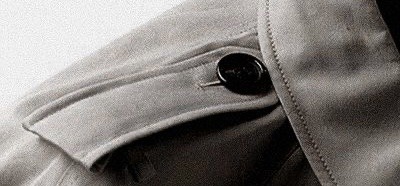





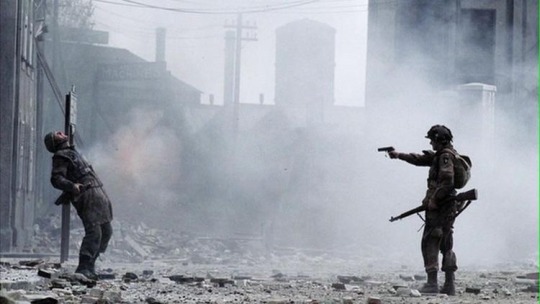
june 6th, 1944, esther armstrong and grief
plainwater by anne carson, fatigues by muralliann, i sing the body electric especially when my power’s out by andrea gibson, eyes closed by lulu, letter from anne sexton to w. d. snodgrass, battle dress by sonja, the truth the dead know by anne sexton, carentan from band of brothers
#band of brothers#band of brothers oc#esther armstrong#attdc#and then the dawn came#web-weaving#did this before for her and found new stuff and went YEP AGAIN#except we explore grief here and :(((#d-day#really really love this#encapsulates many themes about esther and her experience as a correspondent and d-day as a whole
27 notes
·
View notes
Text
D.U.D.E Bios: Edward Moore / Eddie Kingston
The Mad King of Yonkers Eddie Kingston (As of September 1st 2021)
*All information only accurate in D.U.D.E*
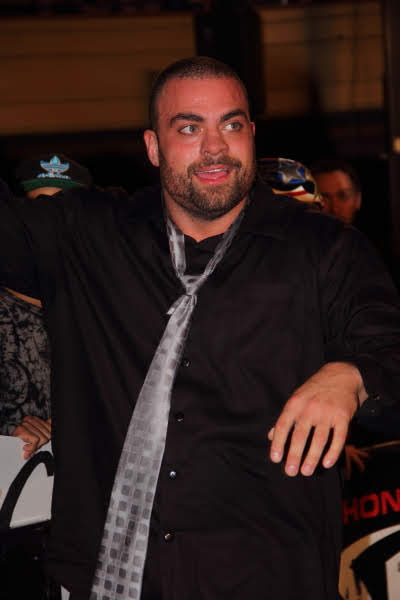


The 'last of a dying breed', The Mad King himself, Eddie Kingston is one of, if not the toughest wrestler in the business, but when put next to his wife, he happily accepts being the second most powerful, but only within their family. Eddie knows how to masterfully create a promo, but his bite is way deadlier than his bark.
"Talk is cheap, Partna."
Name
Full Legal Name: Edward Moore
First Name: Edward
Meaning: Means 'Rich guard', derived from the Old English elements 'ead' 'wealth, fortune' and 'weard' 'guard'
Pronunciation: EHD-ward
Origin: English, Polish
Middle Name: N/A
Pronunciation: N/A
Origin: N/A
Surname: Moore
Meaning: The surname Moore has 3 different possible meanings: 1- Originally indicated a person who lived on a moor, from Middle English 'mor' meaning 'open land, bog'. 2- Derived from the given name 'Maurus', which is a Latin name meaning 'North African, Moorish'. 3- Nickname for a person of dark complexion, from Old French 'more', Latin 'Maurus', meaning 'Moorish'
Pronunciation: MUWR
Origin: English
Alias: War King, The King of Diamonds, The Mad King, The Last of a Dying Breed. Eddie Kingston. Dragon Prince
Reason: Self-Given Monikers. Ring Name. 'Dragon' style in C.R.C is equivalent to highflyers (e.g. Jeff Hardy), 'Dragon Prince' means Eddie is the son (or in Eddie's case, son-in-law) of 'Dragon King' Hywel Rhydderch (Kirby's father)
Nicknames: Ed, Eddie, King, Kingy, Doughboy, Papi, Pá, A stór, Mr Loverman
Titles: Mr
Characteristics
Age: 39
Gender: Male. He/Him Pronouns
Race: Human
Nationality: American. Irish-American & Puerto Rican Mix.
Ethnicity: Mixed. White & Hispanic / Latino
Birth Date: December 12th 1981
Symbols: Bandanas, Gloves, Rosaries, Cigarettes, Cigarette Smoke
Sexuality: Straight
Religion: Irish Catholic / Catholic
Native Language: English
Spoken Languages: English, Spanish
Relationship Status: Married
Astrological Sign: Sagittarius
Theme Song: Miscellaneous Songs - Miscellaneous Artists (2002-2019), 'Cold World' - 'AEW' (2020-)
Voice Actor: Edward Moore / Eddie Kingston (/ N/A?)
Geographical Characteristics
Birthplace: University Ave, The Bronx, New York, USA
Current Location: On the road / Yonkers, New York, USA
Hometown: Yonkers, New York, USA
Appearance
Height: 6'1" / 185 cm
Weight: 240 lbs / 109 kg
Eye Colour: Green
Hair Colour: Black (Greying)
Hair Dye: None
Body Hair: More visible on his chest than his arms and legs
Facial Hair: Full beard, usually short
Tattoos: None
Piercings: Ear Lobe (both)
Scars: Many small, unnoticeable, scars from matches
Health and Fitness
Allergies: None
Alcoholic, Smoker, Drug User: Occasional Drinker, Smoker
Illnesses/Disorders: None Diagnosed
Medications: None
Any Specific Diet: None
Relationships
Allies: The Rhydderch Family, Jon Moxley, Homicide (Nelson Erazo)
Enemies: The Lucifarians
Friends: Ethan Page, Jon Moxley, Nelson Erazo (Homicide), Bryce Remsburg, Renee Paquette, Angel Ortiz, Santana, Jack Marciano
Colleagues: The AEW locker rooms / Too many to list
Rivals: Too many to list
Closest Confidant: Kirby Moore
Mentor: None
Significant Other: Kirby Moore (30, Wife, Née Rhydderch)
Previous Partners: None of note
Parents: Earl Moore (68, Father), Ruth Moore (65, Mother, Née Peña)
Parents-In-Law: Hywel Rhydderch (60, Father-In-Law), Oda Rhydderch (60, Mother-In-Law, Née Gilchrist)
Siblings: Eric Moore (35, Brother)
Siblings-In-Law: Angélica Moore (32, Eric's Wife, Née Orellana)
Nieces & Nephews: Evan Moore (1, Nephew)
Children: Emyr Moore (New-Born, Son), Ethan Moore (New-Born, Son)
Children-In-Law: None
Grandkids: None
Great Grandkids: None
Wrestling
Billed From: Yonkers, New York
Trainer: CHIKARA Wrestle Factory, Mike Quackenbush, Reckless Youth
Managers: Kirby Kingston
Wrestlers Managed: Kirby Kingston
Debut: 2002
Debut Match: The Wild Cards (Eddie Kingston & BlackJack Marciano) VS Melvin Snodgrass & Lester Crabtree. The Wild Cards won via pinfall
Retired: N/A
Retirement Match: N/A
Wrestling Style: Grappler / Street Fighter
Stables: Second Gear Crew, BLK OUT, The OGz, The Unwanted, The Rhydderch Clan (2021-)
Teams: The Wild Cards (Eddie Kingston & BlackJack Marciano), The Mad Royals (Eddie Kingston & Kirby Kingston)
Regular Moves: Inverted Cloverleaf, Lariat, Multiple Knife-Edge Chops to a Cornered Opponent, Belly-To-Back Suplex, Belly-To-Belly Suplex, Capture Suplex, Head-And-Arm Suplex, Saito Suplex, Tiger Suplex, Running Arched Big Boot (Sometimes to a Cornered Opponent), Side Slam Backbreaker, Ura-nage
Finishers: American D (Sliding Forearm Smash to the Back of the Opponent's Head), Backfist to the Future (Spinning Backfist), BLKOUT Lariat (High-Impact Short-Range Lariat), Royal Flush (Spinning DDT), Sliding D (Sliding Forearm Smash)
Refers To Fans As: The Fans
Extras
Trivia: Nothing of Note
#D.U.D.E#eddie kingston#Moore#Kingston#AEW#C.R.C Wrestling Promotion#C.R.C Wrestling Family#Dragon Prince Eddie Kingston#Dragon Style C.R.C#Rhydderch Clan
8 notes
·
View notes
Text
“Although the Minoans have acquired for themselves a certain “flower child” reputation, they were not totally without weapons. Specifically, the Minoans developed slender swords used mainly for thrusting. These bronze implements had the blade, tang, and hilt made as one continuous piece of metal, with a separate pummel and a handle of horn or wood (or, for the fancier sword, gold or silver) riveted directly to the tang (Oakeshott 1994, 27). Such armaments were more suitable for duel-style combat, possibly ritual rather than full-scale mêlé combat (Peatfield 1999, 68–70). To judge from the remains in the shaft graves at Mycenae, the early Mycenaeans originally adopted these Minoan swords, but quickly adapted them to be more resilient in battle. They strengthened the tang/hilt region to decrease the possibility of breakage during cut-and-thrust fighting. Furthermore, they added flanges along the sides of the blade, to provide added protection for the wielder’s hand (Snodgrass 1999, 16). Finally, the blade acquired a slightly leaflike shape, with a central ridge for added strength. Such swords were far wieldier in combat than the Minoan versions (Oakeshott 1994, 32). Other than swords, the Mycenaeans of the shaft graves used heavy spears (of which only the heads remain); slender javelins; and arrows featuring tips of flint, obsidian, and even bronze.
For defense, the early Mycenaeans used two types of shield. One was the so-called figure-eight shield that they adopted from the Minoans. This shield, when seen from the front, had a figure-eight shape, although in 3-D it had an oval shape with the center sides “curled in” for carrying. Frescoes from this period show animal-hide patterns on these shields, suggesting that they were wooden frames on which animal hides were stretched. A second style was the tower shield, a large, rectangular construction consisting of either wood and hide as with the figure-eight shields or possibly an even lighter material, such as wicker. For the head, there were helmets made of rows of boars’ tusks sewn onto a leather cap. Such helmets are mentioned by Homer, with one famous example belonging to Odysseus himself.
Starting around 1450 b.c.e., a new fashion in defensive armor emerged: bronze plate. The best example of this is a full panoply of armor discovered in a warrior’s grave at Dendra. This had a full gorget for neck protection, pauldrons to cover the shoulders, and complete coverage down the torso to the hips, where the armor flared out for ease of motion. On the whole, it was heavy and probably did not allow for long, sustained combat, but it did offer almost full body protection (Snodgrass 1999, 21). Within the next century, new elements were added to the warrior’s panoply, including a bronze helmet and, unique to the Greeks, bronze greaves, which protected the shins and ankles (Snodgrass 1999, 25).
By the end of the Bronze Age, the Greek arsenal once again reinvented itself. Two new styles of sword appeared at this time in the archaeological record. One was a short sword with a strong hilt and straight blade, which does not appear to have been longer than about 2 feet (Snodgrass 1999, 28). Far more important for the Mycenaeans was the arrival of a central European style of sword in Greece, the Naue II or Griffzungenschert sword. This solid-cast sword had a thick hilt onto which was riveted a wooden or bone handle. The nearly leaf-shaped blade had two thin relief ridges, which lightened the blade without sacrificing strength. The tip for thrusting, plus the double-edged blade for cutting, made this an excellent cut-and-thrust weapon, and it remained in the Greek repertoire for centuries (Hänsel 1988, 265). A final piece of evidence concerning arms and armor at the twilight of the Bronze Age is the previously mentioned Warrior Vase, which depicts a row of warriors presumably heading out to battle. In contrast to heavy panoply like that from Dendra, these warriors are in light armor, consisting mainly of heavy cloth, metal greaves, and helmets with only one boar’s tusk per man. They carry spears and rounded shields with an unusual scallop at the bottom. Assuming that the artist was painting from reality, then, we see a society where either lightness and ease of mobility were valued over full armor protection or bronze was more difficult to acquire, forcing the use of different materials for defense. Both are certainly possible. It is also possible that the Warrior Vase depicts a new style of fighting, which was to become far more prevalent and important in the Early Archaic Age: phalanx-style warfare, evolving eventually into the hoplite squadron.
The Griffzungenschert sword that was so popular at the end of the Bronze Age remained a staple in the Dark Age, although now made in iron instead of bronze. During the Dark Age, however, spears became more important as offensive weapons. At first, the spearheads, which were fastened onto a wooden shaft, were made of bronze, probably as the intricate shape was too difficult to hammer (iron could not be melted, but bronze could). In the Archaic Age, these would also be made of iron. The vase painting and archaeology from the time also attest to the importance of archery in the Dark Age. Eighth-century battlefields have turned up several bronze arrowheads, the only enduring part of an archery set consisting of a wood and horn bow with gut bowstring and arrows with wooden shafts and, presumably, feather fletching. Perhaps the most important defensive item of the day was bronze armor, now of a kind far more sophisticated than the Dendra style. One nearly complete example comes from Argos. This shows a corselet (torso armor) fully fitted to the upper body, with the lines of the pectorals molded onto the front. The armor goes down to the lower waist, where it flares out, leaving the lower body free for maneuverability. The pelvis region was probably covered with leather, creating a sort of defensive kilt. A bronze helmet, possibly with horse-hair decoration, covered the head. The remaining defensive armor was a bronze shield. An example of a shield from a soldier’s tomb in Kaloriziki, Cyprus (Hellenized by this point in history), had a composite construction: The central boss and outer rim were of bronze, but the actual body of the shield no longer remains. This section clearly consisted of perishable materials such as wood or leather. A similar, if slightly smaller, shield was used by the Vikings.”
- The Ancient Greeks: New Perspectives, by Stephanie Lynn Budin
4 notes
·
View notes
Text
BOTR - Day 29 - July 13, 2024
We woke up early but we were glad to lie in bed for a while. It was cool outside and we had the window open. That and we were able to slip back into our morning routine… Wordle, Connections, Strands, Spelling Bee.
Breakfast downstairs was simple but filling. We had fruit with yogurt, muffins, hard boiled eggs, coffee/tea, and fresh squeezed orange juice. It gave us the calories we needed for the first hike of the day.
We drove out of town past the ski area to the Snodgrass Mountain Trailhead. Although it was around 10am, we had not prepared to the number of people we would encounter. Main parking lots were full and people were looking for overflow. We lucked out at a roadside pullout about a quarter mile from the trail head.
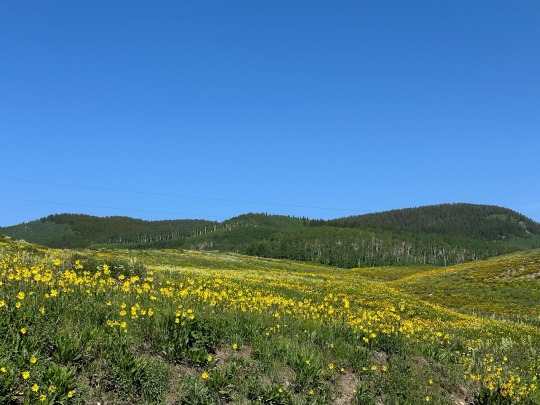
Looking up from the trailhead.
Once on the trail, the draw for the crowds was obvious. The wildflowers were astounding! Initially, we marched up the trail through meadows covered in green, yellow, red, purple, blue, and white. As we climbed higher, we walked through aspen groves with openings that gave us views of the mountains. As we trudged over 11,000’, fir trees dominated the forest. Interestingly, we never got over the tree line. Further north, in Banff for example, the tree line is closer to 6,000’.
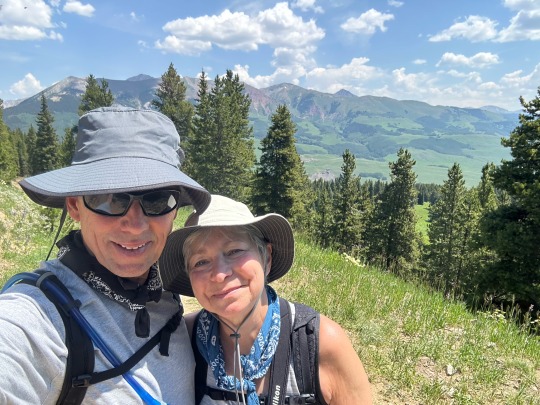
Above the crowds.

Fields of wildflowers!

They go on forever.
Coming down the trail puts different strains on your body. Regardless, it felt good to give back the 1,500’ we had gained over 5.5-ish miles.

Max elevation today!
Diane has been working towards a goal of 65 miles hiked in the two weeks before her birthday. With that in mind, we did a second, shorter hike after lunch.
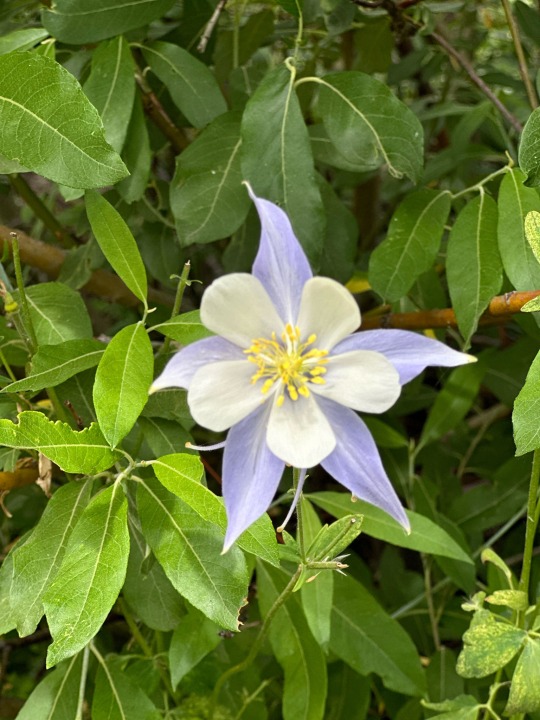
More gorgeous flowers!
Just on the edge of town we hiked the Woods Walk Trail for about 2 miles. Again, the meadows were rich with wildflowers. We also had a lake view and views of the valley across to Mt Created Butte. Also quite visible were peaks that still had more snow than bare earth. This was the perfect cap on the day in advance of a wonderful pre-birthday dinner for Diane.

They go on forever.
The evening started with a cocktail at Eldo on Elk St. Closest thing to a rooftop bar in CB. We sat on the second story deck overlooking the street. A gent, Bobby from Charleston SC, struck up a conversation with us. He has been coming to CB for twenty years and obviously owned a home close by. In addition to talking about how much he likes CB, he also recommended Eldo’s food. We already have reservations for another restaurant so we had to pass on their Himalayan fare (curries, dumplings, etc.).

CB local humor!
Dinner was at Marchitelli’s based on Paul H’s recommendation. It’s his favorite in town. And we can understand why, the food was quite good but the owner and staff were wonderful. Michael, the owner, gave us an excellent, private, cool (no AC) table after I mentioned Paul’s name. Michael also made a point of sitting with us to get acquainted and check on our satisfaction. Stacy, our server, was attentive and made sure that we had a nice relaxing meal at the slow pace we were looking for.Just an FYI, Diane enjoyed the elk cannelloni and I very much enjoyed the osso buco (with an abundance of bone marrow)!

Osso buco. YUM!
The meal left us satisfied and exhausted. We were back to our room before 10pm and asleep shortly after!
0 notes
Text
candace marie hughes abc news stations live bodies lockss system on paid paid paid paid william snodgrass towers office 312 rosa L. parks nashville, tn 37243 earth must return to candace marie hughes and must return to in candace marie hughes. on. paid. must remove covers and coverings. on. paid. paid. paid. paid. cardd. on. paid. must mail cardd and key and device to candace marie hughes. on. paid. paid. paid. paid. must return voices to in candace marie hughes. on. paid. must remove covers and coverings. on. paid.
0 notes
Text
"In the twisted cosmic dance of cannibalistic energies, Kristine Snodgrass' Gradients emerges as a frenzied feast for the senses. It devours the boundaries of perception, consuming the flesh of conventional art forms and regurgitating a psychedelic organ traffick of raw expression. Through glitched visions and asemic transgressions, it devours the oppressive structures that confine us, devouring them with insatiable hunger. Within Gradients, the body becomes an altar of consumption, where tattoos and asemic writings are etched upon the skin, merging with the very essence of existence. It is a ritual of devouring, a carnal communion with the chaotic forces that reside within. The colors bleed and merge, swirling in a cosmic maelstrom of ecstasy and despair, as the boundaries between self and other dissolve into an abyss of cosmic cannibalism. The images and collages pulsate with an unearthly vitality, drawing us into a vortex of fragmented realities. It is a visual chaos, where the grotesque and the beautiful intertwine in an intricate dance of creation and destruction. Gradients devours the limitations of perception, transcending the confines of the known universe and plunging us into the depths of cosmic cannibalism. In this swirling chaos, pain and pleasure intertwine, merging into a sublime ecstasy that defies comprehension. It is a journey into the darkest recesses of the psyche, where the primal urges of consumption and creation merge into a singular cosmic act. Gradients is a testament to the insatiable hunger of the creative spirit, a feast for those willing to abandon the safety of the known and embrace the devouring embrace of cosmic cannibalism."
0 notes
Text
KINGSPORT TIMES NEWS
Hello, and welcome back to my blog. Kingsport times news is a website which provides you with information. News related to news, sports, living, and events. Also, digital media, obituaries, opinions, games and e-paper.
Obituary is a piece of writing about a person’s life that prints in a newspaper soon after he/she has died.
Kingsport times news obituaries
Here you will find information about people who died and the details of their entire life.
They explain in detail how the person died and provide their funeral details. Where the body is going bury , the reason how she died and so on. You will find obituaries of people here for whomever you want to search.
On this website you can share your condolence with one’s family through the website provided. You can send them flowers or give them a visit during the cremation period.
kingsport times news obits
As before mentioned in the above paragraph. obits usually help you find people who are dead with their entire information from birth to death. Here you can find whoever you want to with the details of it. Just type down the correct name of the person, and you will find your information.
Kingsport has helped many families to get together even after one person dies.
Kingsport Times News Obituary
MARIE SNODGRASS OBITUARY, she was a woman I was closely attached to, but I missed her contact. so I searched her name on Kingsport times news, which is a very big blog in the U.S. . But, unfortunately, she died before I could meet her again.
She was born July 11, 1938, and went home to be with her heavenly family on Sunday, February 12, 2023, in the presence of her precious.
Marie was the next of three children born to Neill Archie Black and Virginia Marie Bunn Black in Weber City, Virginia. Marie graduated from Gate City High School in 1955, where she vote for two superlatives, Prettiest and Most Popular. Regrettably, they only allowed her to pick one, so she chose Most Popular. And if you knew Marie, she never met a stranger. kingsport tn times news obituaries
1 note
·
View note
Text
Heavy Metal and Beer...

So, I rotate between 3 households. This young family lives in a modest container in Evergreen Harbor. I really like industrial, grungy hoods and gameplay. One of my favorite custom worlds in Sims 3 was Jericho by Simsample. But this here is Isidor and his little boy Bodie. Isidor’s dream is to start a local beer brewery..
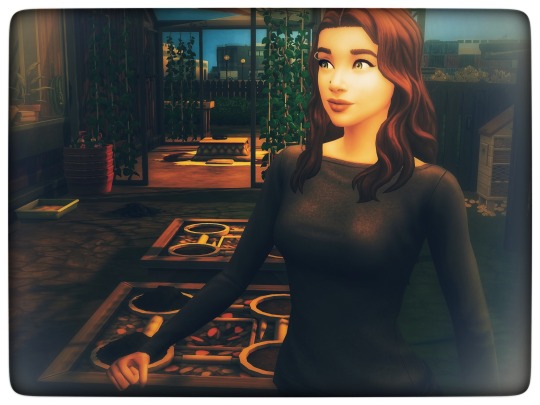
And here we have his wife and Bodie’s mom Nixie. For a while I didn’t really know what to do with her, hence her name. Until MD Sims Better Sims mod came along where you are able to choose your a sims preferences like in Sims 3. So, I gave her the aspiration ‘figure it out’ and made her a thrill seeking substitute teacher who loves heavy metal..
6 notes
·
View notes
Text
ummm dont talk to me unless youve read
Effeminate England: Homosexual Writing After 1885 by Joseph Bristow; Secret Selves: Confession and Same-Sex Desire in Victorian Autobiography by Oliver Buckton; Sacred and Profane in Symbolist at the Art by Luigi Carluccio; Virtuous Vice: Homoeroticism and the Public Sphere by Eric Clarke; Nameless Offences: Homosexual Desire in the Nineteenth Century by H. G. Cocks; Talk on the Wilde Side by Cohen; An Introduction to Logic and Scientific Method by Morris R. Cohen, Ernest Nagel; Sex Scandals: The Private Parts of Victorian Fiction by William Cohen; London and the Culture of Homosexuality, 1885–1914 by Matt Cooke; Family Likeness: Sex, Marriage, and Incest from Jane Austen to Virginia Woolf by Mary Jean Corbett; American Sympathy: Men, Friendship and Literature in the New Nation by Caleb Crain; Emulation: Making Artists for Revolutionary France by Thomas Crow; Love Revealed: Simeon Solomon and the Pre-Raphaelites by Colin Cruise; Queer Beauty: Sexuality and Aesthetics from Wincklemann to Freud and Beyond by Whitney Davis; Friendship's Bonds: Democracy and the Novel in Victorian England by Richard Dellamora; Masculine Desire: The Sexual Politics of Victorian Aestheticism by Richard Dellamora; "Beautiful, Aesthetic, Erotic." The New York Review of Books by Richard Dorment; Romantic Genius: The Pre-History of a Homosexual Role by Andrew Elfenbein; British Aestheticism and Ancient Greece: Hellenism, Reception, Gods in Exile by Stefano Evangelista; The Trials of Oscar Wilde: Deviance, Morality, and Late-Victorian Society by Michael S. Foldy; The History of Sexuality: An Introduction (Volume I) by Michel Foucault; Queer Dickens: Erotics, Families, Masculinities by Holly Furneaux; Idylls of the Marketplace: Oscar Wilde and the Victorian Public by Regenia Gagnier; Selected Poetry by Johann Wolfgang Goethe, David Luke; The Story of Art by E. H. Gombrich; Queer Others in Victorian Gothic: Transgressing Monstrosity by Ardel Haefele-Thomas; Homosexual Desire by Guy Hocquenhem; "Burne-Jones and Gustave Moreau." Horizon: A Review of Literature and Art by Robin Ironside; The Homosexual Revival of Renaissance Style, 1850–1950 by Yvonne Ivory; The Symbolists by Philippe Jullian; Observations on the Feeling of the Beautiful and Sublime by Immanuel Kant, John T. Goldthwait; Sexual Justice: Democratic Citizenship and the Politics of Desire by Morris B Kaplan; Sodom on the Thames: Sex, Love, and Scandal in Wilde Times by Morris B Kaplan; Painted Men in Britain, 1868–1918: Royal Academicians and Masculinities by Jongwoo Jeremy Kim; Between Women: Friendship, Desire, and Marriage in Victorian England by Sharon Marcus; The Other Victorians: A Study of Sexuality and Pornography in Mid-Century Britain by Steven Marcus; Pleasures Taken: Performances of Sexuality and Loss in Victorian Photographs by Carol Mavor; The Last Pre-Raphaelite: Edward Burne-Jones and the Victorian Imagination by Fiona MacCarthy; "The Homosexual Role." Social Problems 16.2 by Mary McIntosh; Victorian Keats: Manliness, Sexuality, and Desire by James Najarian; Walking the Victorian Streets by Deborah Epstein Nord; Catholicism, Sexual Deviance, and Victorian Gothic Culture by Patrick O'Malley; The Place of Enchantment: British Occultism and the Culture of the Modern by Alex Owen; The Renaissance by Walter Pater; Flesh and the Ideal: Winckelmann and the Origins of Art History by Alex Potts; Art for Art Sake's: Aestheticism in Victorian Painting by Elizabeth Prettejohn; Art of the Pre-Raphaelites by Elizabeth Prettejohn; Beauty and Art: 1750–2000 by Elizabeth Prettejohn; Beauty's Body: Femininity and Representation in Victorian Aestheticism by Kathy Alexis Psomiades; Art and Homosexuality: A History of Ideas by Christopher Reed; From Realism to Symbolism: Whistler and His World by Allen Reff, Staley Theodore; Men in Wonderland: The Lost Girlhood of the Victorian Gentleman by Catherine Robson; Edward Carpenter by Sheila Rowbotham; Between Men: English Literature and Male Homosocial Desire by Eve Kosofsky Sedgwick; The Epistemology of the Closet by Eve Kosofsky Sedgwick; Sexual Anarchy: Gender and Culture at the Fin de Siècle by Elaine Showalter; The Wilde Century: Effeminacy, Oscar Wilde, and the Queer Moment by Alan Sinfield; Aubrey Breadsley: Dandy of the Grotesque by Chris Snodgrass; Postal Pleasures: Sex, Scandal, and Victorian Letters by Kate Thomas; Cities of Dreadful Delight: Narratives of Sexual Danger in Late-Victorian London by Judith Walkowitz; "Queer and Then?." Chronicle of Higher Education by Michael Warner
68 notes
·
View notes
Photo

You may now order the paperback version of The Body Problem here:
https://www.lulu.com/en/us/shop/cre-wells-and-letitia-trent/the-body-problem/paperback/product-k2eqqy.html?page=1&pageSize=4
"Wells and Trent wander through ruins of a medical dictionary, digitalia, and collage to create a severe pose as commentary on destruction and decay of the body--and the body as phenomena. Wells, in his introduction, says 'with art comes form, and with form come limits.' And is not the body limited by the only human surety: death? But, ultimately it is all about creation. I applaud the aesthetic of this collection of riveting images. Another required text for Asemia and Visual Poetry."
--Kristine Snodgrass, author of RANK
"A brilliant exercise in both repetition and symmetry... Wells applies Trent’s words to the page over and over in ways that remind the reader/viewer of the different effects that happen in a hall of mirrors. There is always another place to turn and look again from a new perspective."
--Amanda Laughtland, publisher of Teeny Tiny Press
#visual poetry#vispo#poetry#spilled ink#collage#digital collage#digital art#asemic#asemic writing#asemicwriting#Letitia Trent#c r e wells#chris wells#chris r e wells#collaboration#artists on tumblr#poets on tumblr#artists books#artist's book#art#arte#kunst#contemporary art#contemporaryart#contemporary#faint press
8 notes
·
View notes
Photo



While Beardsley's style underwent many changes in the course of his brief career, his fascination with clothing and his interest in transgendered subjects continued throughout, from the Morte d'Arthur (1893-94) to Mlle de Maupin (1897-8)...
In the Morte d'Arthur designs that launched his career as an illustrator, Beardsley's critique of the chivalric world of Malory's romance undermines the sexual hierarchy on which that society depends. The critique is a double-edged sword, for it cuts against both the Arthurian world of the text and contemporary Victorian society, which idealized that world and reclaimed its chivalric values for itself. As Debra N. Mancoff's study of the nineteenth century's production and reception of Malory suggests, 'in reviving the Arthurian legend, Victorian artists and writers, and their eager audience...forged a mirror of the present, projecting their own ideals and ambitions, dreams and fears, onto legendary characters and events'. Since many of these idealizations were produced and circulated in the 'high art' of literary and visual imagery, Beardsley was fighting in the front lines of the battlefield when he accepted the challenges of illustrating the legendary Round Table. Sir Edward Burne-Jones, for instance- who became a knight himself while Beardsley was working on the Morte and whose Pre-Raphaelite presence haunts Beardsley’s early design for the books- pursued the chivalric theme almost obsessively in his paintings. As George P. Landow comments, ‘taken together, these works comprise a sexual myth that had great appeal for the artist and his contemporaries- that is, the myth of the dominant male’s rescue of the helpless maiden.’’
Far from reinforcing this chivalric myth, Beardsley’s art undermines the presupposition of essential sexual difference with its representations of dominant women and weak men, its playing with the motif of disguise, and its many androgynous figures. In ‘How Sir Launcelot was Known by Dame Elaine’, for example, Beardsley focuses on a theme he returns to again and again in the Morte- that of the ineffectual or inactive knight. More than a quarter of his full page illustrations show knights asleep, entranced, or ill, and many of the initial vignettes further develop the motif. In the full page illustrations, the knights’ ineptitude is highlighted by their lack of a complete set of armor: none of them has a helmet or upper body mail or even a sword. Moreover, both their languid bodies and their delicate faces give them an androgynous look. In the illustration of Elaine and Launcelot, this androgyny is reinforced, as so often in Beardsley’s work, by the mirroring effect of the prominent faces by the man and the woman. At the same time, the strength of women is enhanced by the details of the composition, which suggest that Elaine, rather than Launcelot, is in control of the situation, actively engaged in a rescue aided by the bevy of female ‘squires.’ By focusing on such moments, Beardsley attacks the chivalric myth that artists like Burne-Jones perpetuated in the Victorian popular imagination. Christopher Snodgrass has shown how Beardsley's campy distortions of Pre-Raphaelite conventions (the romanticized middle ages, the 'feminine ideal', the 'aura of high art' itself) subvert the representation of a 'hierarchical, unified, and univocally ordered world'. Indeed, as Mancoff comments in her study of The Arthurian Revival in Victorian Art, despite the fact that J.M. Dent commissioned the artist precisely for his 'ability to emulate Burne-Jones,' Beardsley inverted the 'iconographical formulations of the Arthurian Revival' as established by the Pre-Raphaelites and challenged 'three generations of heroic imagery with his androgynous phantoms'.
The androgyny motif is repeated, but in different effect, in the illustration for ‘How Sir Tristram Drank the Love Drink’, which anticipates the double image in the celebrated design of John the Baptist and Salome, produced for Salome but not used. In both illustrations, the locked gazes of the mirroring subjects suggest equality, not hierarchical distinctions. In these images of male/female mirroring, Beardsley elaborates a costuming that cloaks the form of the body, so that-especially in the design for Tristram and Isoud- the human figure becomes nothing more than a geometric shape, a pattern outlined by draperies, and hence, apparently protean. The body's shape-changing potential, underscored by the dramatic use of clothing as both concealer and revealed, is also explored in the Salome illustration, where Salome's breasts and navel are more decorative aspects of the costume than female body parts.’
Excerpt about transsexuality, social commentary, and artistic subversion in Aubrey Beardsley's illustrations for Morte d'Arthur from Sartorial Obsessions: Beardsley and Masquerade, by Lorraine Janzen Kooistra, chapter 9 in Haunted Texts: Studies in Pre-Raphaelitism in Honour of William E. Fredeman.
19 notes
·
View notes
Photo

Robert Bly: Influential American poet with an abiding interest in mysticism and the nature of masculinity
In 1986 the New York Times review of Robert Bly’s Selected Poems was headlined “Minnesota Transcendentalist”. It was perceptive to note his link with the New England poets of the 19th century, which was strong, but within a few years it would look absolutely prescient. For although he was one of the outstanding poets of his generation, Bly, who has died aged 94, may be remembered, like the two most enduring of the original Transcendentalists, for facets of his work other than poetry.
Just as Ralph Waldo Emerson’s legacy is as an essayist, the influence of Bly’s essays on poetic theory and his many translations have resonated with readers and his fellow poets. But Bly is more likely to be seen as a 20th-century parallel to Henry David Thoreau. Like Thoreau, he made his mark with civil disobedience, and later with a hugely popular prose work concerned with the denaturing effects of civilisation.
Bly’s early poetry in the 60s was his best, although its quality was often subsumed by controversy surrounding his anti-war positions. In 1966, he co-founded American Writers Against the Vietnam War. The following year, when he won the National Book award for The Light Around the Body, he donated the prize money to draft resistance. But his entire poetic career was thrown into the shadows by the remarkable success of Iron John: A Book About Men (1990).
A meditation on his vision of American manhood being torn from its natural roots because fathers fail to initiate their sons properly into masculinity, Iron John spawned a movement combining encounter-group sensitivity with primal tree-hugging survivalism. Yet with his imagistic, often spiritual, poetry, his deep interests in mysticism, his rustic dress and his nasal, high-pitched voice, Bly often seemed an unlikely prophet of masculinity.
Bly called his poetic technique “deep image”, and his highly visual, quietly surreal poems, often in rural settings, reflected his upbringing in Scandinavian-settled Minnesota. He was born in Lac qui Parle county, where his parents, Alice (nee Aws) and Jacob Bly, Norwegian immigrants, were farmers. At 18, after graduating from high school in Madison, he enlisted in the US navy.
Discharged in 1946, he enrolled at St Olaf’s College in Northfield, Minnesota, but after a year transferred to Harvard, where he joined a precocious group of undergraduate writers, including John Ashbery, Richard Wilbur, John Hawkes, George Plimpton and, at Radcliffe, Adrienne Rich. It was at Harvard that he read a poem by WB Yeats, and resolved to “be a poet for the rest of my life”.
After graduation in 1950, he moved to New York, writing and struggling to support himself with a succession of menial jobs and meagre disability payments for the rheumatic fever he contracted while in the navy.
In 1954, he returned to the midwest, as a graduate student in the University of Iowa’s writers’ programme, teaching to pay his way. Again he found himself in a writer’s hothouse; his fellow students included Philip Levine, Donald Justice and WD Snodgrass, with Robert Lowell and John Berryman on the faculty. The proliferation of creative writing programmes on American campuses today owes much to the collective success of this group, the level of which, it could be argued, has never been repeated.
He married the writer Carol McLean in 1955, and returned to Minnesota. The next year, he received a Fulbright grant to travel to Norway to translate poetry. There he discovered not only such Swedish poets as Tomas Tranströmer, Gunnar Ekelöf and Harry Martinson, but also, in translation, other writers relatively unknown in English: Georg Trakl, Pablo Neruda and César Vallejo. His translations of Tranströmer continued throughout both their careers, and the affinity between their poetry makes these some of the most effective ever done.
On his return to America, Bly started a magazine to publish such writers. The Fifties, co-edited with William Duffy, would change its name decade by decade, and had an immense effect on American poetry, defining the deep image style. Through the magazine, Bly became close to a similarly inclined poet, James Wright, and with him translated Twenty Poems of Georg Trakl (1961). He also translated Knut Hamsun’s novel Hunger from the Norwegian in 1967.
Deep image arose from the way the poets Bly admired drew on almost subconscious imagery, yet used it in a very deliberate way. He called it “leaping” poetry, once describing it as surrealism with a centre holding it all together. Out of these influences, in 1962, came Bly’s first book of poems, Silence in the Snowy Fields, whose bonding with the countryside would be echoed by later generations of creative writing professors in poems about chopping wood in denim shirts. But in Bly’s hands, the quiet of the northern landscape provided a deep, personal beauty. It was an immediate success, and led to a Guggenheim fellowship.
Those poems gave no hint of the despair that became evident in The Light Around the Body, which not only reflected his feelings about the Vietnam war, but also his years of struggle in New York. They drew on the same imagery as his first book, but used it in a far more ferocious way. Studying Jung’s theories of mythic archetypes led to Bly’s mixing them into his politics in Sleepers Joining Hands (1973), whose long poem, The Teeth Mother Naked at Last‚ is a powerful condemnation of war as an affront to the Great Mother Culture. He placed a long essay, I Came Out of the Mother Naked‚ at the centre of this book, and prose poems would soon become an integral part of his poetics, culminating in This Body Is Made of Camphor and Gopher Wood (1977).
After a divorce from Carol in 1979, in 1980 he married Ruth Ray, a Jungian psychologist, and moved to Moose Lake, Minnesota. He began working with men’s and women’s groups, producing books of poetry that reflected the transactional experience, most notably the love poems in Loving a Woman in Two Worlds (1985).
After PBS Television’s Bill Moyers produced a documentary, A Gathering of Men, about those men’s groups, Iron John became an immediate bestseller. It was followed by The Sibling Society (1996), which lamented the “perpetual adolescence of modern American men”, and The Maiden King: The Reunion of Masculine and Feminine (with Marion Woodman, 1998). At the same time his translations expanded to include the 15th-century Sufi mystic Kabir and the Urdu poet Ghalib. Bly encapsulated his poetic career in the moving Meditations on the Insatiable Soul (1994) and Morning Poems (1997), and published his second “selected poems” collection, Eating the Honey of Words, in 1999. The US invasion of Iraq inspired the collection The Insanity of Empire (2004).
In 2013 Airmail, selections from Bly’s decades of correspondence with Tranströmer, was published in English. It revealed both a deep friendship and a contrast in the way the poetry of this homespun American mystic and the Swedish psychologist made its “leaps”. Stealing Sugar From the Castle: Selected and New Poems was published in the same year, and a last Collected Poems appeared in 2018.
Bly is survived by Ruth, by four children, Mary, Bridget, Micah and Noah, from his first marriage, and by nine grandchildren.
🔔 Robert Elwood Bly, poet and writer, born 23 December 1926; died 21 November 2021
Daily inspiration. Discover more photos at http://justforbooks.tumblr.com
11 notes
·
View notes